


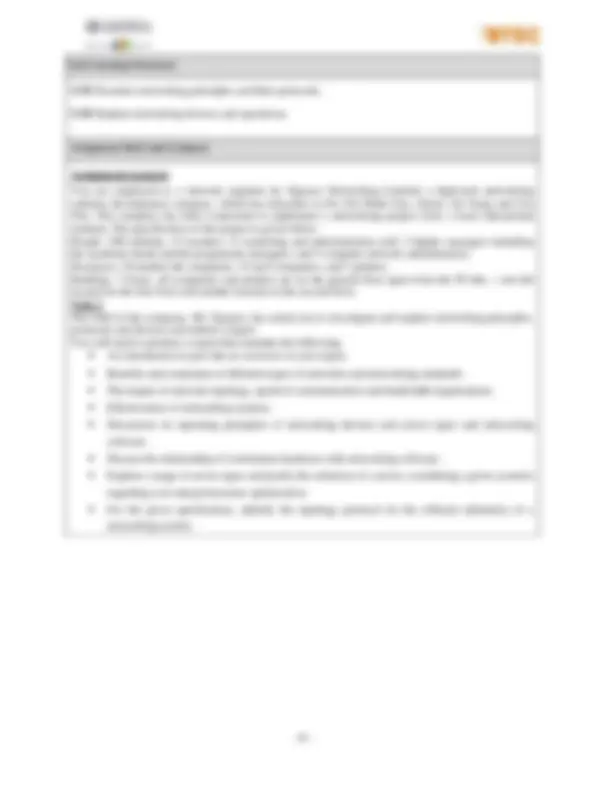


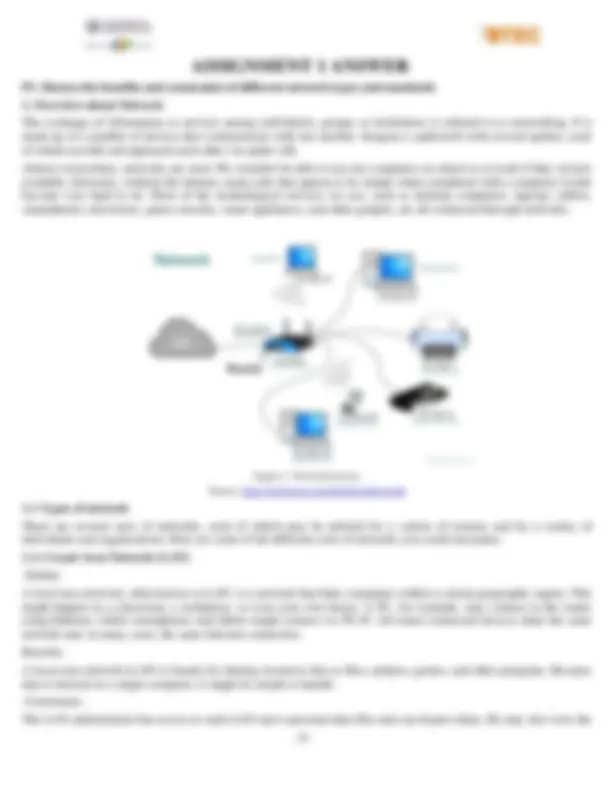

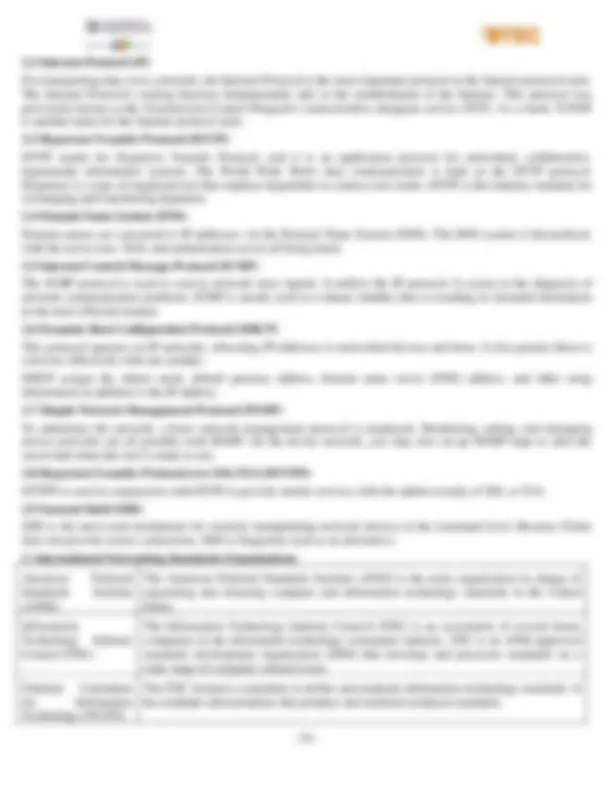
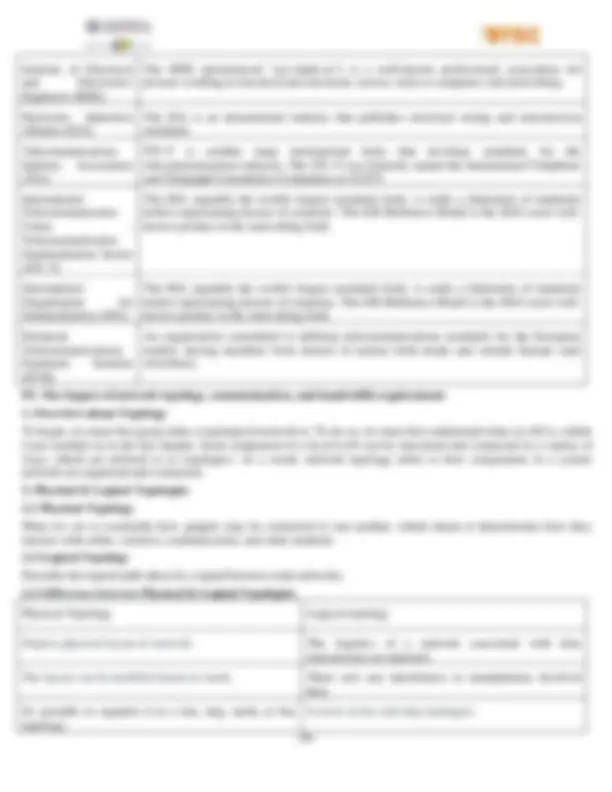
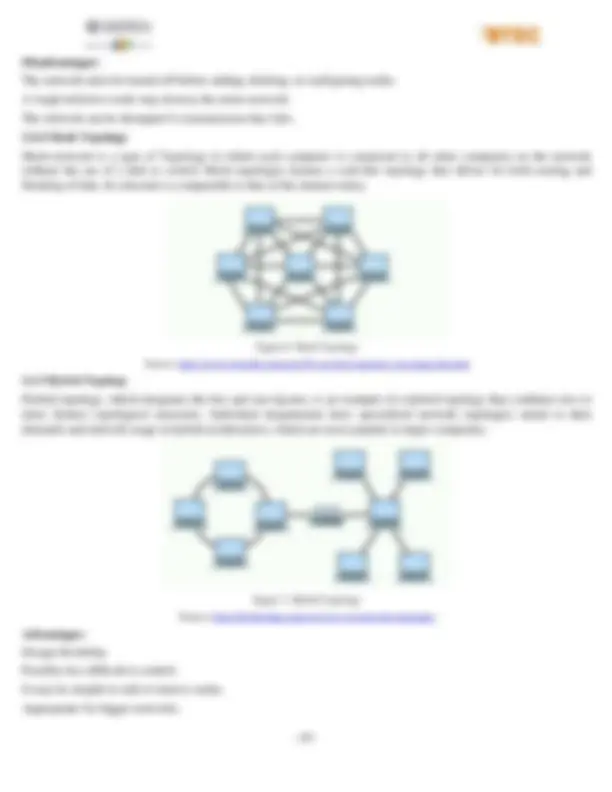
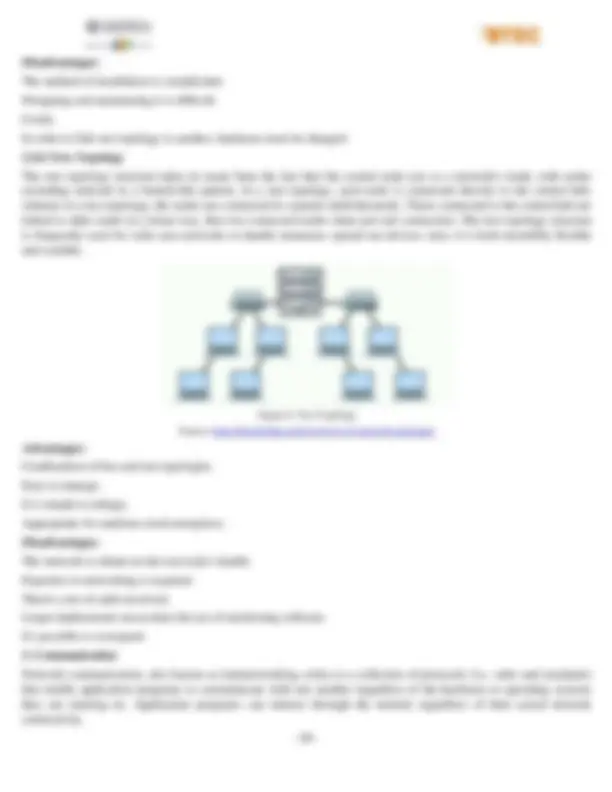
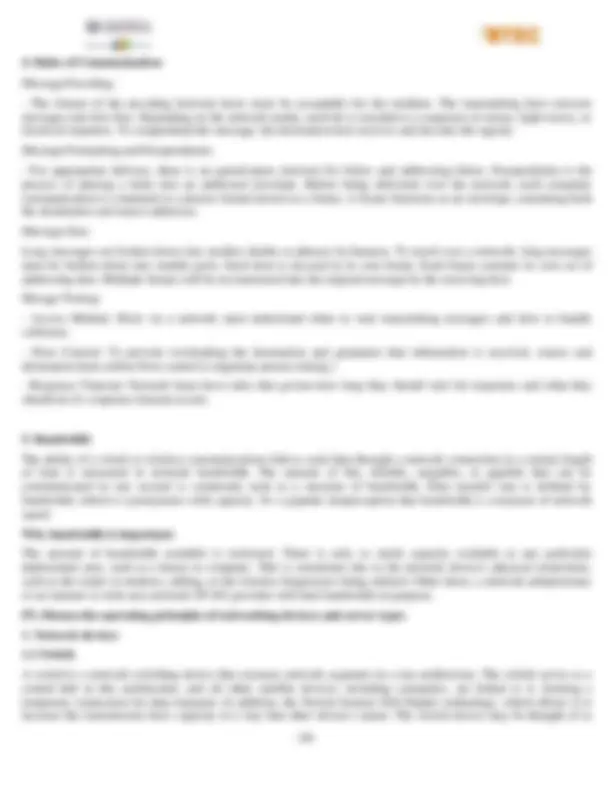
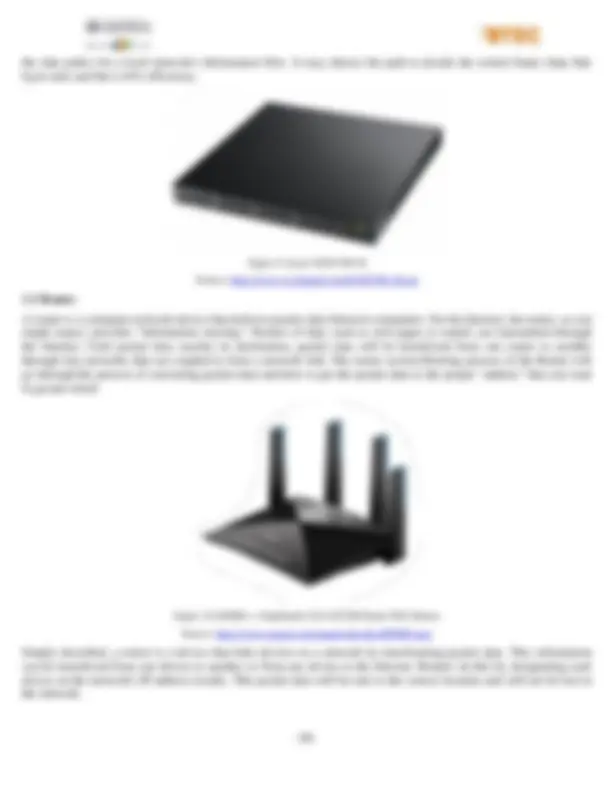
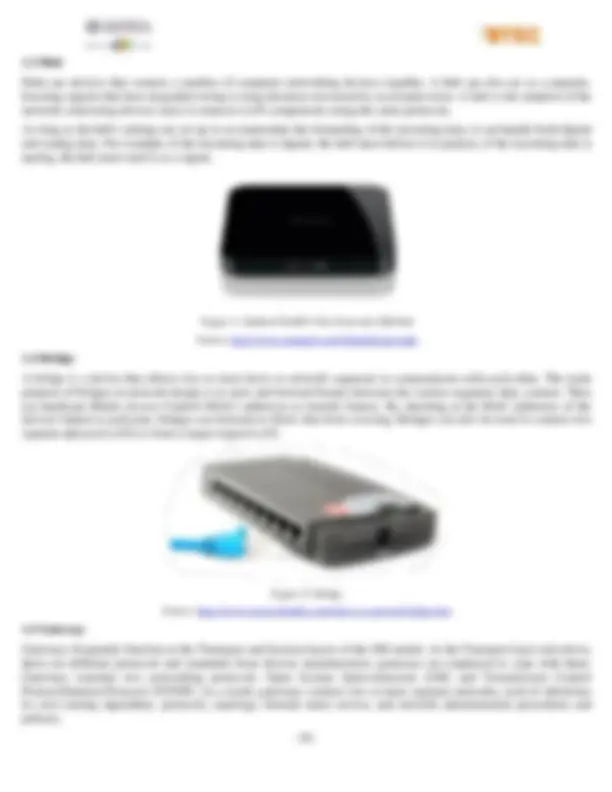

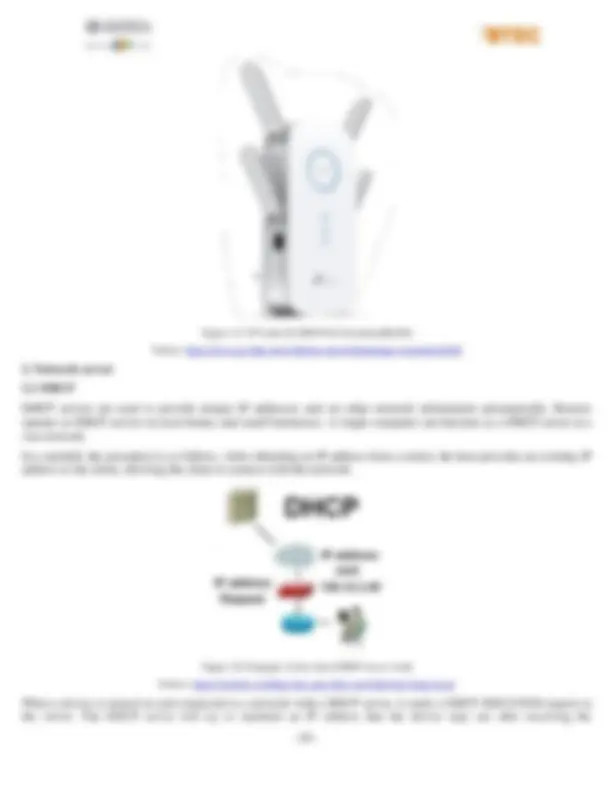
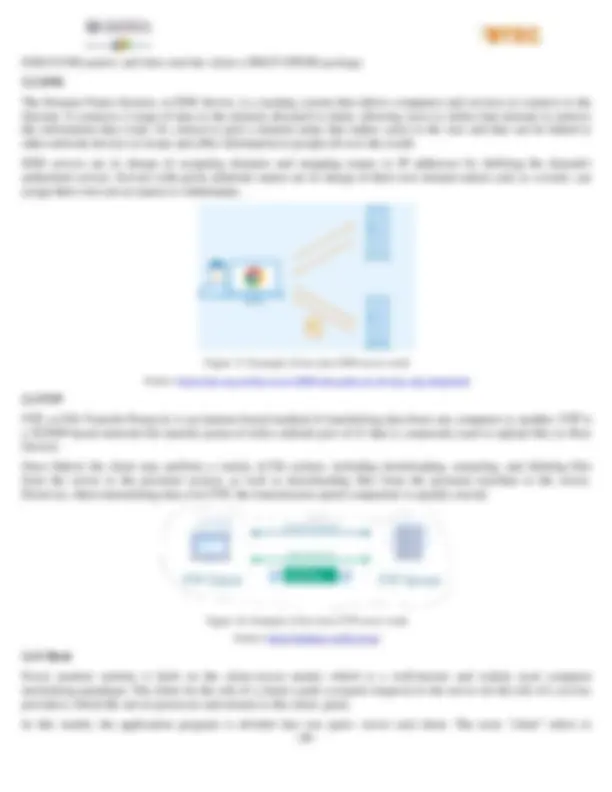
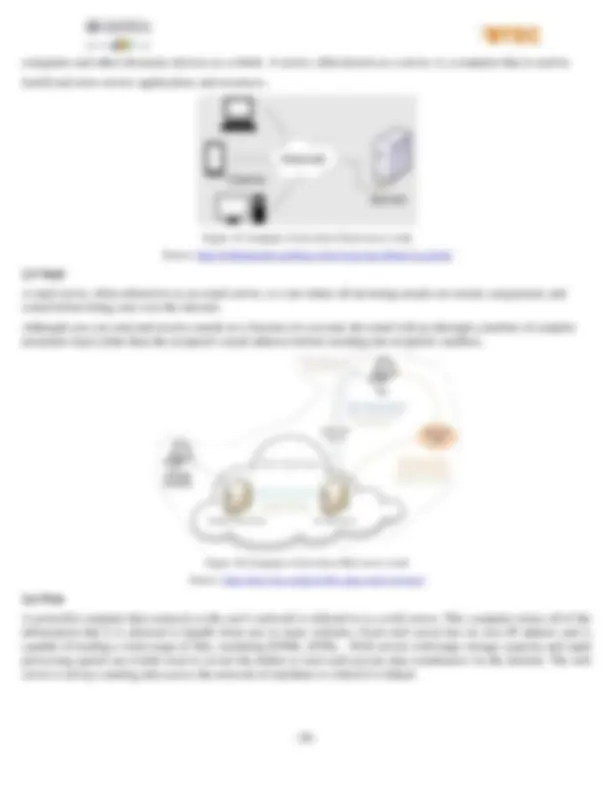
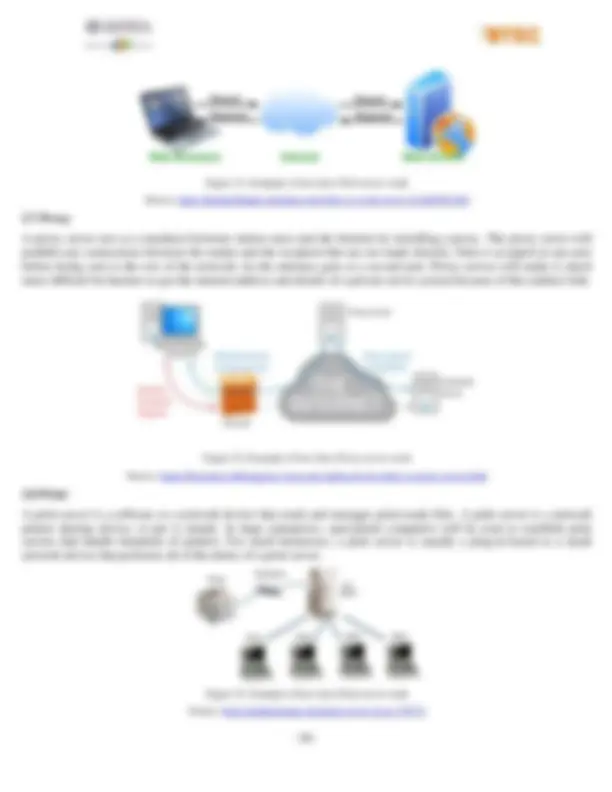
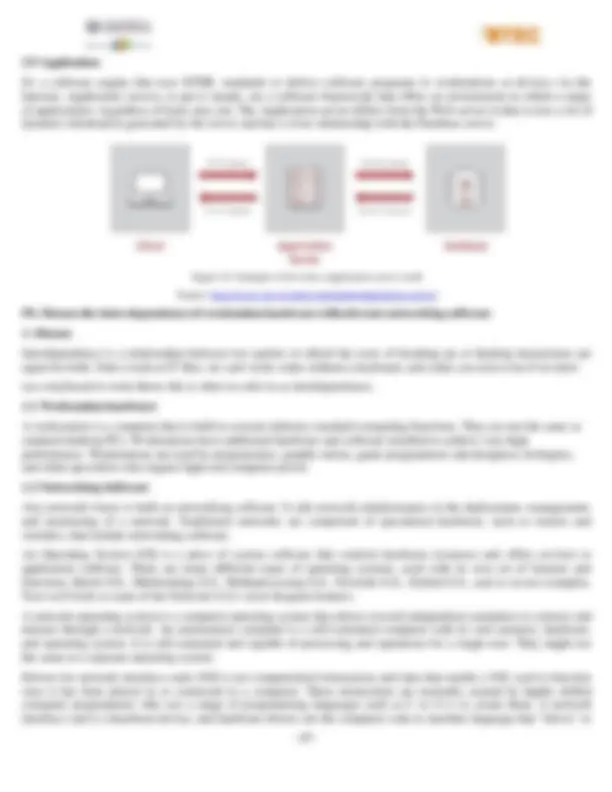
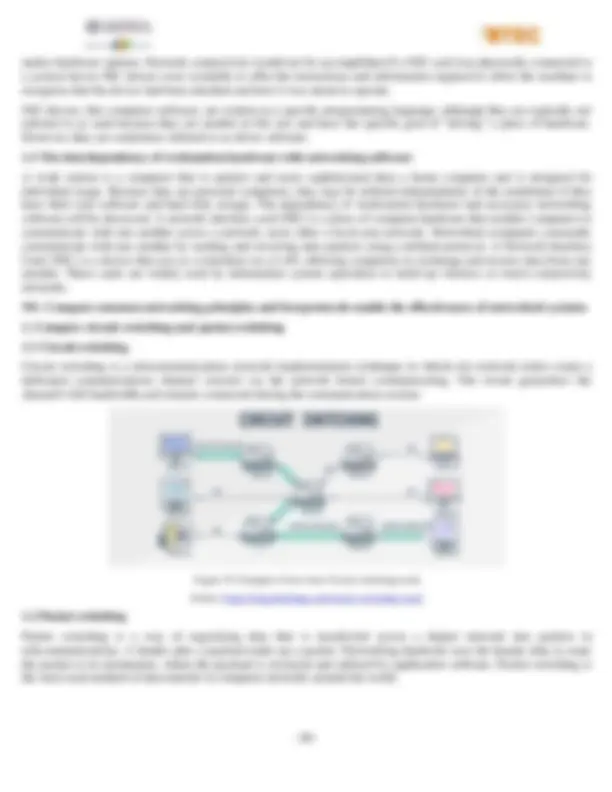
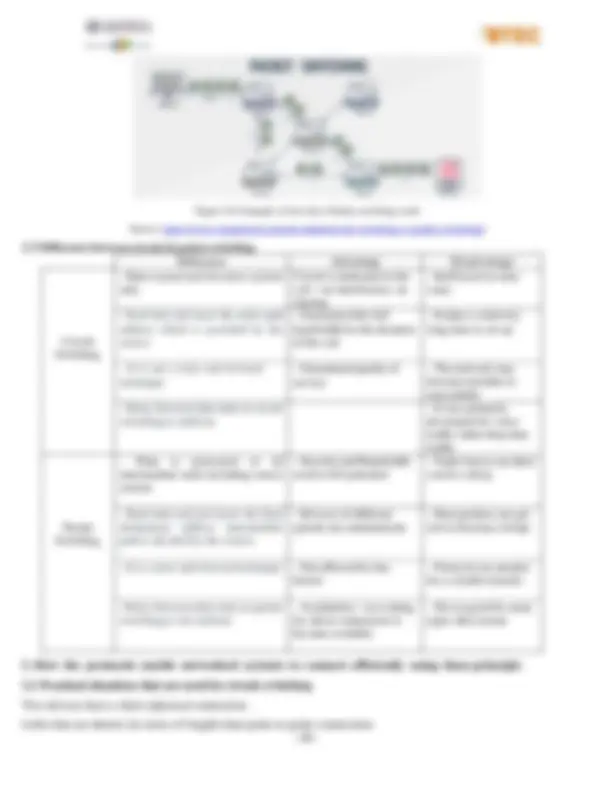
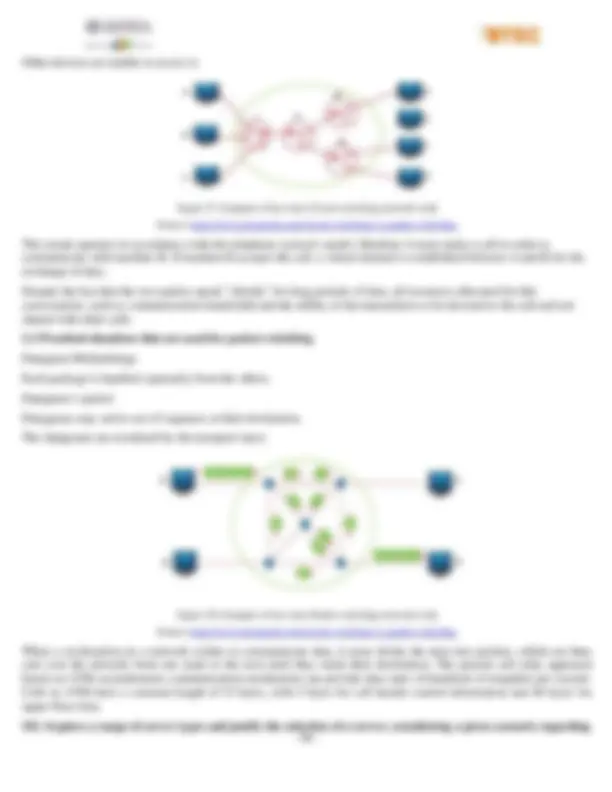
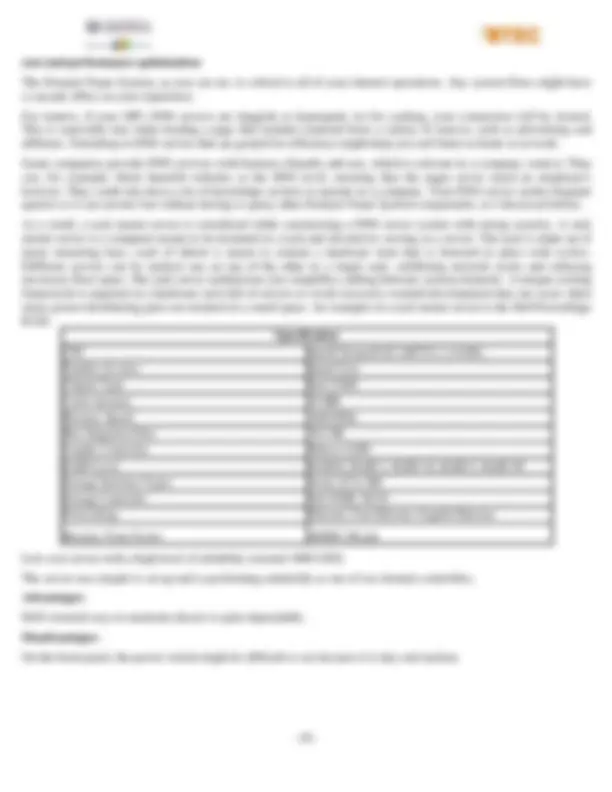




Study with the several resources on Docsity

Earn points by helping other students or get them with a premium plan


Prepare for your exams
Study with the several resources on Docsity

Earn points to download
Earn points by helping other students or get them with a premium plan
Community
Ask the community for help and clear up your study doubts
Discover the best universities in your country according to Docsity users
Free resources
Download our free guides on studying techniques, anxiety management strategies, and thesis advice from Docsity tutors
Assignment 1 subject 1619 University of Greenwich
Typology: Exams
1 / 34

This page cannot be seen from the preview
Don't miss anything!



























Learner’s name: Tran Quang Hien ID: GCS Class: GCS1003A Subject code: 1619 Assignment due: Assignment submitted:
ASSIGNMENT 2 FRONT SHEET Qualification BTEC Level 5 HND Diploma in Computing Unit number and title Unit 2: Networking Infrastructure Submission date 06/03/2022 Date Received 1st submission Re-submission Date Date Received 2nd submission Student Name Tran Quang Hien Student ID GCS Class GCS1003A Assessor name Nguyen Xuan Sam Student declaration I certify that the assignment submission is entirely my own work and I fully understand the consequences of plagiarism. I understand that making a false declaration is a form of malpractice. Student’s signature Grading grid
Student Name/ID Number: Tran Quang Hien/ GCS Unit Number and Title: Unit 2: Networking Academic Year: 2022 Unit Assessor: Sam X. Nguyen Assignment Title: Networking Infrastructure Issue Date: April 1st, 2021 Submission Date: Internal Verifier Name: Date: Submission Format: Format: The submission is in the form of an individual written report. This should be written in a concise, formal business style using single spacing and font size 12. You are required to make use of headings, paragraphs and subsections as appropriate, and all work must be supported with research and referenced using the Harvard referencing system. Please also provide a bibliography using the Harvard referencing system. Submission ● Students are compulsory to submit the assignment in due date and in a way requested by the Tutor. ● The form of submission will be a soft copy posted on http://cms.greenwich.edu.vn/. ● Remember to convert the word file into PDF file before the submission on CMS. Note: ● The individual Assignment must be your own work, and not copied by or from another student. ● If you use ideas, quotes or data (such as diagrams) from books, journals or other sources, you must reference your sources, using the Harvard style. ● Make sure that you understand and follow the guidelines to avoid plagiarism. Failure to comply this requirement will result in a failed assignment.
Unit Learning Outcomes: LO1 Examine networking principles and their protocols. LO 2 Explain networking devices and operations. Assignment Brief and Guidance: Assignment scenario You are employed as a network engineer by Nguyen Networking Limited, a high-tech networking solution development company, which has branches in Ho Chi Minh City, Hanoi, Da Nang and Can Tho. The company has been contracted to implement a networking project from a local educational institute. The specification of the project is given below: People: 200 students, 15 teachers, 12 marketing and administration staff, 5 higher managers including the academic heads and the programme managers, and 3 computer network administrators. Resources: 50 student lab computers, 35 staff computers, and 3 printers. Building: 3 floors, all computers and printers are on the ground floor apart from the IT labs – one lab located on the first floor and another located on the second floor. Task 1 The CEO of the company, Mr. Nguyen, has asked you to investigate and explain networking principles, protocols and devices and submit a report. You will need to produce a report that includes the following:
ASSIGNMENT 1 ANSWER P1. Discuss the benefits and constraints of different network types and standards
1. Overview about Network The exchange of information or services among individuals, groups, or institutions is referred to as networking. It is made up of a number of devices that communicate with one another. Imagine a spiderweb with several spiders, each of which can link and approach each other via spider silk. Almost everywhere, networks are used. We wouldn't be able to use our computers at school or at work if they weren't available. Seriously, without the internet, many jobs that appear to be simple when completed with a computer would become very hard to do. Most of the technological services we use, such as desktop computers, laptops, tablets, smartphones, televisions, game consoles, smart appliances, and other gadgets, are all connected through networks. Figure 1: Network devices Source: https://techterms.com/definition/network 1.1 Types of network There are several sorts of networks, each of which may be utilized for a variety of reasons and by a variety of individuals and organizations. Here are some of the different sorts of networks you could encounter. 1.1.1 Local Area Network (LAN)
LAN user's PC and internet history. As a result, security has been compromised, and privacy has been violated. In addition, the available space is restricted. 1.1.2 Campus Area Networks (CAN)
devices. PAN has a range of 10 meters and is utilized for personal purposes such as data exchange among gadgets. Some personal area networks are wired, such as USB, while others, such as Bluetooth, are wireless. WPAN stands for wireless personal area network.
2 .2 Internet Protocol (IP) For transporting data over a network, the Internet Protocol is the most important protocol in the Internet protocol suite. The Internet Protocol's routing function fundamentally aids in the establishment of the Internet. This protocol was previously known as the Transmission Control Program's connectionless datagram service (TCP). As a result, TCP/IP is another name for the Internet protocol suite. 2.3 Hypertext Transfer Protocol (HTTP) HTTP stands for Hypertext Transfer Protocol, and it is an application protocol for networked, collaborative, hypermedia information systems. The World Wide Web's data communication is built on the HTTP protocol. Hypertext is a type of organized text that employs hyperlinks to connect text nodes. HTTP is the industry standard for exchanging and transferring hypertext. 2.4 Domain Name System (DNS) Domain names are converted to IP addresses via the Domain Name System (DNS). The DNS system is hierarchical, with the server root, TLD, and authorisation server all being listed. 2.5 Internet Control Message Protocol (ICMP) The ICMP protocol is used to convey network error signals. It utilizes the IP protocol. It assists in the diagnosis of network communication problems. ICMP is mostly used to evaluate whether data is reaching its intended destination in the most efficient manner. 2.6 Dynamic Host Configuration Protocol (DHCP) This protocol operates on IP networks, allocating IP addresses to networked devices and hosts. It also permits them to converse effectively with one another. DHCP assigns the subnet mask, default gateway address, domain name server (DNS) address, and other setup information in addition to the IP address. 2.7 Simple Network Management Protocol (SNMP) To administer the network, a basic network management protocol is employed. Monitoring, setting, and managing device networks are all possible with SNMP. On the device network, you may also set up SNMP traps to alert the server hub when the tool is ready to use. 2.8 Hypertext Transfer Protocol over SSL/TLS (HTTPS) HTTPS is used in conjunction with HTTP to provide similar services with the added security of SSL or TLS. 2.9 Secured Shell (SSH) SSH is the most used mechanism for securely manipulating network devices at the command level. Because Telnet does not provide secure connections, SSH is frequently used as an alternative.
3. International Networking Standards Organizations American National Standards Institute (ANSI) The American National Standards Institute (ANSI) is the main organization in charge of organizing and releasing computer and information technology standards in the United States. Information Technology Industry Council (ITIC) The Information Technology Industry Council (ITIC) is an association of several dozen companies in the information technology (computer) industry. ITIC is an ANSI-approved standards development organization (SDO) that develops and processes standards on a wide range of computer-related issues. National Committee for Information Technology (NCITS) The ITIC formed a committee to define and maintain information technology standards. It has multiple subcommittees that produce and maintain technical standards.
Based on device selection and availability, this has a significant influence on network cost, scalability, and bandwidth capacity. This has a significant influence on data packet delivery and speed. It also controls data flow and ensures that data packets are delivered in a timely manner. It is an actual route concerned with the transmission. It's a high level depiction of data flow. Physical connection of the network. Data path followed of the network. 2.4 Types of Topology I'll take you through the most popular network topology definitions so you can get a sense of their benefits and drawbacks. 2.4.1 Star Topology The most common network architecture is a star topology, which is a network model that consists of a central device and information nodes under its management. Workstations, terminals, and other LAN devices can act as information nodes in this scenario. The central hub acts as a manager, directing and controlling system activity. Figure 3: Star Topology Source: https://www.totolink.vn/article/59-cac-kieu-topology-cua-mang-lan.html Advantages: Devices may be added, uninstalled, or upgraded without slowing down the central hub. Installing and modifying it is simple. The topology may be configured with less cabling. Troubleshooting is simple. It's simple to remove parts and spot flaws. Disadvantages: All linked nodes are deactivated if the central hub fails. More cable length is required than with linear topologies. The hub's efficiency, power, and arrangement determine its performance. 2. 4 .2 Bus Topology This is a sort of topology in which all devices, such as servers, workstations, and information nodes, are connected to one another via a single main cable for data transmission. Two terminator devices seal the cable's two ends. The destination's particular address is carried in the data and signals transferred across the cable.
Figure 4: Bus Topology Source: https://www.totolink.vn/article/59-cac-kieu-topology-cua-mang-lan.html Advantages: It's ideal for small network configurations. It is possible to link the needed nodes using less cable. Allows for the expansion or contraction of a network. Affordability Simple to comprehend Disadvantages:
Disadvantages: The method of installation is complicated. Designing and maintaining it is difficult. Costly. In order to link one topology to another, hardware must be changed. 2.4.6 Tree Topology The tree topology structure takes its name from the fact that the central node acts as a network's trunk, with nodes extending outward in a branch-like pattern. In a star topology, each node is connected directly to the central hub, whereas in a tree topology, the nodes are connected in a parent-child hierarchy. Those connected to the central hub are linked to other nodes in a linear way, thus two connected nodes share just one connection. The tree topology structure is frequently used for wide area networks to handle numerous spread-out devices since it is both incredibly flexible and scalable. Figure 8 : Tree Topology Source: https://boxhoidap.com/overview-of-network-topologies Advantages: Combination of bus and star topologies. Easy to manage. It is simple to enlarge. Appropriate for medium-sized enterprises. Disadvantages: The network is reliant on the root node's health. Expertise in networking is required. There's a lot of cable involved. Larger deployments necessitate the use of monitoring software. It's possible to overspend. 3. Communication Network communication, also known as internetworking, refers to a collection of protocols (i.e., rules and standards) that enable application programs to communicate with one another regardless of the hardware or operating systems they are running on. Application programs can interact through the internet regardless of their actual network connectivity.
4. Rules of Communication Message Encoding: